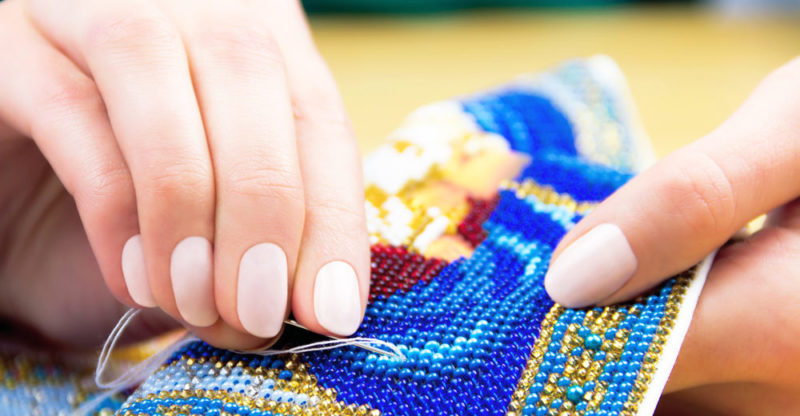We explain what muscles are, how they are formed and their classification. Also, what are its features and functions.
What are muscles?
Muscles are a type of tissue (muscular tissue) of the body of the human being and of most animals , which has the property of contracting and relaxing, thus generating a controlled amount of movement thanks to its union with the skeleton.
The fibers are controlled by the nervous system , which through electrical impulses orders the contraction or relaxation of the muscle, either voluntarily (such as the movements of the extremities) or passively (such as the beating of the heart ).
Most muscles are attached to the bone by a tendon , a thick and resistant tissue that withstands the stresses and impacts of movement, preventing damage to the fibers or their separation from the bone.
How are muscles formed?

The specificity of each muscle depends greatly on what its function is and where it is located in the body.
Most are fusiform (spindle-shaped) or elongated , some are flat, and some are fan-shaped.
Many have shapes specially designed for the cavities they occupy , such as the eye muscles.
However, all muscles are made up of fibers that make up muscle cells or myocytes , inside which are deposits of special proteins called actin and myosin, which are responsible for contraction and relaxation.
Muscle types
Muscles can be of three types:
- Striated or skeletal. Those muscles that are attached to the bone by a tendon and that allow their voluntary movement, maintenance of posture or body position.
- Smooth. Those that do not intervene in the voluntary movements of the body, but those that occur "behind the scenes", such as the internal walls of the digestive tract, the gallbladder, the blood vessels, the bronchi, the urinary bladder or the uterus, or even around the pupil in the eye .
- Cardiac. They are striated in nature, although they do not connect with any bone, and are due to involuntary movements. 75% of the total volume of the heart is made up of this type of muscle, unique in the human body.
What are muscles for?
As has been said, the main function of the muscles is to convert the chemical energy stored in the body in the form of ATP (Adenosine Tri Phosphate) into mechanical energy, that is, movement.
These movements can be voluntary (through which the living organism is linked with its environment) or they can be involuntary (through which the body performs internal functions that are essential for life).
In addition, the muscles provide support and posture to the body , even when in a resting position.
Muscular strength

Depending on the type of muscle, the force exerted by its contractions can be full or partial , depending on whether it can contract to varying degrees or can only contract fully and fully relax.
Such muscular diversity is what allows us, for example, to carry out fine motor actions that involve precise and very determined movements.
Muscle tissue properties
The tissue that makes up muscles has certain unique properties:
- electrical excitability. As shown by experiments in which electricity is injected into a muscle and activated (this is how defibrillators work in hospitals, for example), muscle fibers are very reactive to the presence of electrical stimuli, usually through the nervous system . with whom it interacts.
- Elasticity. Although its shape is constantly changing, muscle tissue normally has the ability to recover its initial shape and be ready for new work.
- Contractibility-Extensibility. As we have already said, muscle tissue can contract and reduce its size, or it can stretch and lengthen its size, without being damaged in any way.
Types of contraction

There are several types of muscle contraction, which are:
- Isometric or static contraction. The muscle tension does not exceed the resistance to overcome, so the muscle does not vary in length. Movement is generated with expenditure of energy .
- Isotonic or dynamic contraction. The muscle shortens or lengthens, and can be of two types:
- Concentric isotonic contraction. It generates positive work from the approximation of the joint segments. The muscle shortens and the applied force is greater than the resistance to overcome.
- Eccentric isotonic contraction. The joint segments separate, generating negative work, with less force applied than the resistance to overcome.
- auxotonic contraction. It occurs when isotonic is combined with isometric in different proportions.
- isokinetic contraction. Dynamic contraction with fixed speed and variable resistance to overcome, which combines first the eccentric, then the isometric and finally the concentric.
Atrophy and hypertrophy
Muscles can atrophy or hypertrophy depending on how we use them.In the first case, for example, prolonged disuse of the muscle weakens its fibers and makes them more vulnerable to wear, losing muscle mass in the process.
In the second case, on the other hand, the continuous and insistent exercise of the muscles causes a strengthening and growth of the muscle fibers, an increase in mass and an increase in the force they can generate. This is what happens, for example, with bodybuilders.
Muscle diseases
 The muscles are sensitive to certain types of conditions, such as:
The muscles are sensitive to certain types of conditions, such as:
- Cramps. Painful and involuntary contractions of a certain muscle, which last a short time and are produced by muscle fatigue or specific electrochemical imbalances.
- inflammations. Unusual and momentary thickening of muscle tissue due to injuries, blows or infections.
- Dystrophy. This is the name given to a group of more than 30 different hereditary diseases, which cause muscle weakness and loss of mass.
- injuries. Such as sprains, tears, or other breaks (temporary or not) of muscle fibers, which usually result in restricted mobility and a lot of pain.
Tips to take care of the muscles
Like any organ in the body, muscles require attention and care. Some recommendations for this are:
- Do warm-ups before and after exercising.
- Hydrate the body during or after exercise .
- Keep the muscles active, as periods of inactivity that are too long can result in atrophy.
- Respect recovery times and do not abuse muscle strength.
The muscles of the human body
 The human body has a total of more than 600 muscles of all the categories described above , forming what is known as the muscular system .
The human body has a total of more than 600 muscles of all the categories described above , forming what is known as the muscular system .This constitutes a high percentage of his body mass, and allows him an enormous variety of movements , from simple walking to the most delicate surgical operations.
What his musculature lacks in physical power, he makes up for in precision and agility.
The above content published at Collaborative Research Group is for informational and educational purposes only and has been developed by referring to reliable sources and recommendations from technology experts. We do not have any contact with official entities nor do we intend to replace the information that they emit.
Passionate about understanding and contributing to a world that does not stop changing. New forms of Work, Sustainability and Technology. For many years he has worked as a creative for large international companies. He has a Ph.D. in information technology and he has been doing quantitative research in the interdisciplinary areas of information systems, cyber security, data analytics and artificial intelligence. He continue to look for creative solutions through technology to help companies to be more humane and sustainable..
Leave a reply
Your email address will not be published. Required fields are marked *Recent post

Sport: What Is It, Types, Risks, Features, Characteristics and Examples

Dogs: Emergence, Features, Characteristics, Feeding and Breeds

Story: Definition, Elements, Structure, Features and Characteristics

